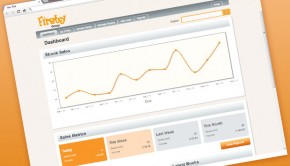The DRM dilemma
Essential tool or obsolete weapon? A defence against piracy or an obstacle to sales? Digital Rights Management is an issue that has deeply divided the publishing industry over the last few years.
DRM—technology that restricts the use of digital content once it has been bought—was evolved by publishers and retailers to protect their interests. But it has alienated some consumers, who consider it obstructive.
Some publishers have responded by scrapping it. The Bookseller’s recent Digital Census found that one in five publishers has removed DRM from their ebooks and another third have considered doing so—but nearly half have not. The issue clearly splits publishers right down the middle—so what can be done to restore unity?
Those who oppose DRM tend to be pretty vocal. They protest that the restrictions it places on the people who spend good money on digital content are blunt and off-putting. At a well-attended debate on DRM put on by Byte The Book in mid-January, John Mitchinson, author and co-founder of Unbound, called it a malady of publishing—a sign that it is behind the times. It can be expensive too, and critics suggest that money spent on DRM could be better used elsewhere—on improving both the content and the technology of digital material.
But there are many sound reasons for publishers, retailers and libraries to like DRM. Publishers see it as an essential means of defending their copyright against those who do not want to pay for it. If piracy becomes rampant, they argue, they and the authors they work with will not be able to keep producing it in the first place. And in the STM and education sectors, restrictions on content access are commonplace—and expected. Locking content behind subscription paywalls, IP-authentications, and password-protected barriers is considered the norm, and publishers are unlikely to remove those gateways any time soon.
For retailers, DRM can be a useful way to keep customers coming back to their own platforms rather than shop around, while for libraries, it helps establish necessary controls on the way people lease and loan ebooks. If they did not have effective control over rights, libraries would not be able to persuade publishers that they should handle their digital content at all.
Those arguing for and against DRM seem a long way apart. But perhaps both sides are right. Partly it is a problem of perception. Publishers are sometimes portrayed as overly zealous guardians of content, and out of touch with modern consumer habits—but most are not like that at all. They know full well that digital formats have changed reading for good, and they agree that those who buy their content should have some freedom with it—like the ability to read it across multiple platforms. But they also need to protect their rights to at least some extent. The two things aren’t mutually exclusive.
The solution to the issue probably lies in better and more flexible iterations of DRM. Most at the Byte the Book event agreed that current tools need improvements—and there are signs that these are coming. Sony is reported to be working up a new form of DRM that has a much lighter touch, making it easier to rent, lend and resell ebooks. Most importantly, it will help to establish clear ownership trails, helping people feel that rather than simply licensing an ebook, they actually own it. This is an important distinction, and should be very helpful in breaking down the barriers that some people think DRM puts up.
There is another solution which exists, of course. Social DRM has been around for some time now, applying digital watermarks to eBook files. One of the major advantages here is that the purchased title can be sideloaded onto Kindle devices: smuggled into the Amazon ecosystem, whilst circumventing their payment gateway. Firsty have been using the Social DRM service for a number of years, and a good number of client publishers take advantage of the less onerous and more flexibility approach.
Another line of thinking includes ways to reinforce publishers’ rights without actually deploying DRM. The Copyright Licensing Agency has just launched an improved version of What I Can Do With This Content, a tool that lets publishers tell their customers about copyright terms for online content in a respectful way. The ALCS has relaunched What the Dickens, its scheme to teach young people about copyright. Cory Doctorow has meanwhile been commissioned by the Electronic Frontier Foundation to consult on its mission to reform DRM, working with the industry on viable alternatives in copyright protection. Browser-based reading, on which Firsty is working at the moment, could well be another solution.
It might be hard to agree a strategy on rights protection that pleases all publishers, authors and retailers. But as attitudes to rights continue to change, it is this sort of fresh thinking, collaboration and education that will help to ensure that DRM works for everyone.





